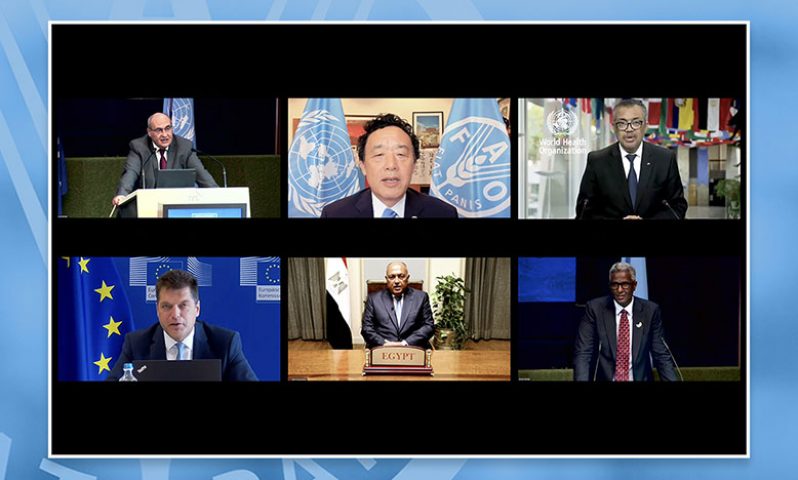RURAL areas bear the greatest burden related to forced displacement, both in terms of outmigration and hosting large numbers of ‘incomers’, highlighted Director-General of the Food and Agriculture Organisation (FAO), QU Dongyu, at the International Dialogue on Migration 2022.
The event noted that human migration is at its highest level ever, and food security, along with climate patterns and conflicts, is one of the main drivers.
The dialogue, organised by the International Organisation for Migration (IOM), focused this year on “Overlapping global crises: the impacts of food insecurity and climate change on migration and displacement.”
Opening the event, the IOM Director-General, António Vitorini, noted that food security is a major issue today and is destined to be a greater one tomorrow, with growing risks that distribution problems today will be replaced by food production problems next year. He also emphasised that climate impacts are shaping migration in all parts of the world.
FAO Director-General Qu welcomed those introductory remarks, noting that 80 per cent of the world’s displaced people are in countries or territories affected by acute food insecurity and malnutrition and that face climate and other disaster risks.
“Rural people have fewer opportunities and resources to adapt to a changing climate and repeated exposure to climate events increases the risk of poverty,” he said, noting that this puts a lot of pressure on people to migrate or be forcibly displaced, or, worse, trapped in high risk areas unable to move.
FAO’s work on climate mitigation, resilience building and early action is geared to ensure that migration is a choice instead of a necessity, he added. He also noted that, since taking office three years ago, one-third of the emergency and resilience funding managed by FAO is allocated to address the challenge of distress migration.
“Investing in agrifood systems transformation and longer-term responses is key to strengthening the resilience of agrifood systems to risks, including conflict, extreme weather events and economic shocks,” Qu said, who added: “Effective and sustainable support to smallholder farmers will be vital to ensure they are part of the solution, and to localise supply chains.”
Other participants in the opening session of the dialogue, including the Director-General of the World Health Organisation and the Special Presidential Envoy for Drought Response, Somalia, noted the broad spectrum of ways that broken agrifood systems can trigger migration problems, through increased disease and communal conflicts.
NEW PATHWAYS
FAO’s Director-General encouraged optimism, saying that migration should also be seen as a “potential positive force for the green transition”.
Investments in migrants and in diaspora communities, and the transfer of skills and knowledge in climate-resilient livelihoods and climate-smart technologies, can contribute to promoting green agri-businesses and improve access to food, Qu said.
“New pathways for resilience should also look at creating enabling conditions to harness the potential of migration for climate change adaptation in areas of origin, transit and destination,” he added.
He pointed to FAO’s Hand-in-Hand Initiative, which is organising a broad set of investments in Central America’s Dry Corridor region, where water management problems and recurring droughts are pushing a lot of family farmers to leave their homes.
He also reminded policy makers that FAO has, together with the United Nations University, developed a global guide and toolkit to facilitate the integration of human mobility into National Adaptation Plans and Nationally Determined Contributions from a rural livelihood perspective.
The IOM-hosted Dialogue continues through Tuesday with panels addressing a range of issues, including one on gender-responsive approaches featuring Giorgia Prati, a Migration and Climate Change specialist at FAO. (FAO)




.png)









